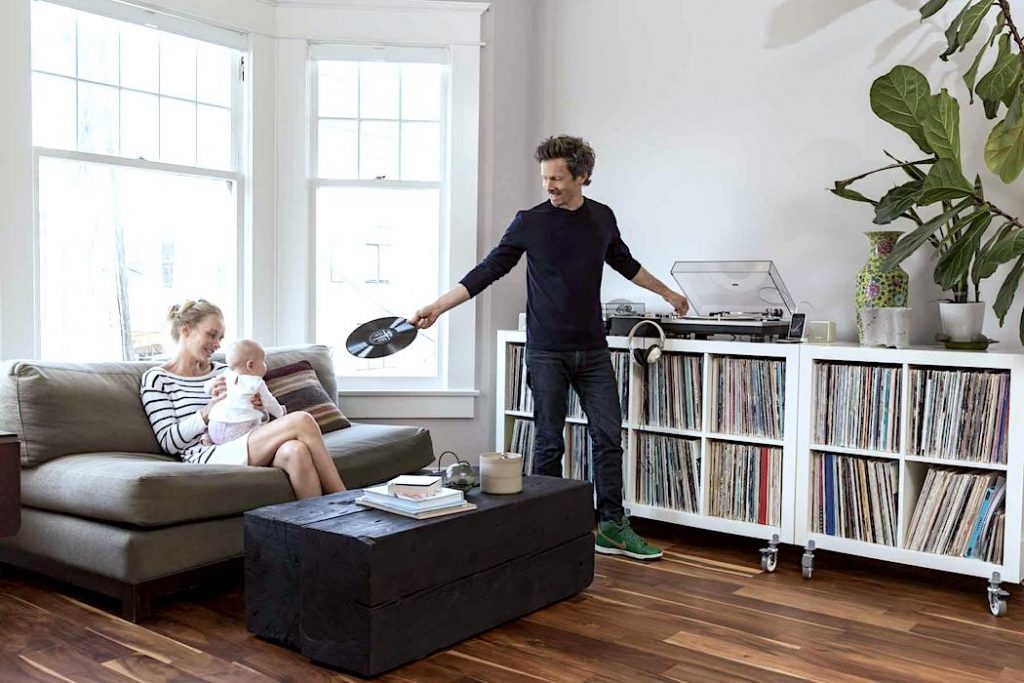It was autumn 2014, in Toronto’s East End, when Trevor Larocque decided to launch his latest venture, the Tiny Record Shop. Larocque, a Canadian native, had already developed a reputation as founder of Paper Bag Records, a record label representing Canadian bands in performances and productions around the world. The Tiny Record Shop displays about 2,500 pieces within a themed 77 square-foot space, and has received accolades from The Vinyl Factory as one of the world’s top record shops.
Larocque’s venture was well-timed. Vinyl record sales have exploded across North America over the last six years. In January, a report came out showing 2017 as a high watermark – denoting the highest sales of vinyl records since the late 1980’s. In the US alone, vinyl LP sales topped $14.3 million.

It is clear that vinyl is once again in vogue; and, in light of the reincarnation and renewal within the industry, we sat down with Larocque to discuss the idea of starting a record collection in the digital age.
How do you evaluate the condition of a record? As an early-stage collector, how can one know if they’re paying the right price?
“When I pull the record out of a sleeve, the first thing I do is determine whether its ‘clean.’ There is no way a record, no matter how new, will not have some degree of markings on it – as a result of a paper cover against plastic. The important point is determining that there are no scratches you can feel with a light touch, the kind of markings that will result in jumping or skipping.”
Once Larocque is satisfied that a record is clean, he begins conducting diligence on past sales around the world. One such website is Discogs.com, where collectors can investigate the range of price points in different transactions. Most records, such as Pearljam’s Bonero, will trade within a range (between $200 and $300, largely based on the condition of the individual record).
What makes certain pressings more valuable?
While many mainstream records will begin around $25, rare vinyl can often price over $1,000. For collectors, getting their hands on appreciating pieces can be the cornerstone to developing a collection.
“One example of a rare record is The Butcher Cover of The Beatles’ Yesterday and Today. The Butcher Cover was first released in North America in the conservative late 1960’s. The cover was covered in blood and doll parts. The record company freaked out and quickly re-plastered the covers with the new image of the band with The Trunk Cover. It is rumored that there are less than 10,000 Butcher Covers out there in the world. That’s a piece that’s simply always going to appreciate in value.”
An interesting strategy for collectors is to find the first pressing by a band, developed in their home country. The first pressing is often the version that the band heard from test pressings — and sounds that are ultimately approved for mass production. One can only make so many copies from first pressing plates. Every other pressing is simply a reproduction.
Building Your Own Collection
It isn’t mandatory that everyone go out to buy their favorite band’s first pressing. The first step, according to Larocque, is deciding whether your passion for vinyl is as a collector, a music enthusiast, or both. From there, you can develop an eclectic collection with our own mark on it.
The Beatles represented the largest seller of vinyl records in 2017. As one considers starting a vinyl collection, one must weigh the pros of cons of classic versus new age, foreign versus domestic, and commonplace versus priceless pressings. The result, it increasingly seems, will be a world where the newest generation of tech-savvy consumers are engaging in one an ages-old method of appreciating music.

